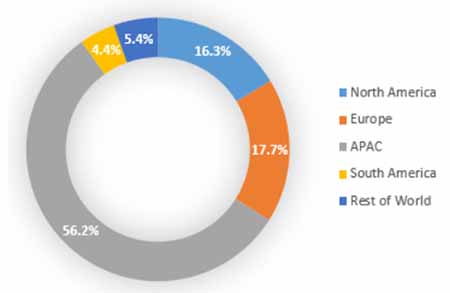Not all lubricants are created equally! In fact, they need to be designed differently for the various applications in which they are to be used. Typically, the overarching classification of lubricants can fall under either oil or grease. However, there are further categorizations that also include solid lubricants and specialty lubricants, as there are many varying applications of lubricants.
Oil Lubricants: Characteristics and Uses
Most of us are very familiar with oils. They are liquid; we use them in our cars or trucks, but what are they? An oil is comprised of base oil and additives. The additives can be used to either enhance, suppress, or add new characteristics to the base oils2.
Typically, oils can be used in many different applications and provide the advantages of having various viscosities according to the application3. These can range from oils with a viscosity similar to that of water to oils as thick as tar.
One of the main advantages of using oils as lubricants is their ability to dissipate heat from the system. Since they are fluid and circulate, they can “move” heat away from specific components and even help to remove some contaminants.
Oils can be used in gasoline-engine passenger cars, diesel-engine applications, circulating systems, turbines, gear applications, hydraulics, compressors, or even natural gas engines. Each application represents a different ratio of additives to base oils, ranging from 30% (motor oils) to a mere 1% additive (turbine oils).
Grease Lubricants: Advantages and Limitations
While the industry is familiar with oils as lubricants, there are some places where grease works better than oils! Greases are oils to which a thickener has been added. As such, they comprise base oil, additives, and thickener. The thickener holds the oil in place, allowing it to perform its main functions of reducing friction and providing lubrication.
One of the main advantages of greases is their ability to stay in one place. Consider a bearing placed at a 90° or 180° angle. If oil were used to lubricate this, it would drain out very easily. However, grease stays in place and still ensures that lubrication occurs.
While staying in place is a major advantage of grease, there are also some disadvantages to using it. A couple of those include the fact that grease cannot transfer heat away from components and keeps contaminants in place. These can both negatively impact the equipment.
Similar to oil, grease has different viscosities as per the NLGI (National Lubricating Grease Institute). These range from a 000 (almost the consistency of oil) to a 6 (similar to that of a block) and are all made for varying applications, as shown in the figure below.
While these viscosities define the application, one must also remember that the base oil viscosity can also differ. As such, operators must be mindful of NLGI grade, base oil viscosity, and additive package when selecting an appropriate grease.

Solid Lubricants: When and Why to Use Them
Why do we need a solid lubricant if we already have oils and greases in different states? Particular applications make these lubricants mandatory as they are the only ones that can meet the conditions and specifications involved.
Unlike oils or greases, these solid lubricants are designed to work in one lubrication regime, boundary lubrication4 (more on this later in the article). What sets these lubricants apart is their ability to form very thin films on the surfaces of moving components, which reduces friction due to their very low shear strength.
Some examples of solid lubricants include graphite, Molybdenum Disulfide (MoS2), Boren Nitride, and Fluoropolymer (PTFE). These solid lubricants can usually be used as grease additives (such as MoS2 for greases in mining with high load, low-speed applications) or even in the space industry for dry lubricant coatings on spacecraft.
Find out more in the full article, "Lubrication Explained: Types, Functions, and Examples" featured in Precision Lubrication Magazine by Sanya Mathura, CEO & Founder of Strategic Reliability Solutions Ltd.
























